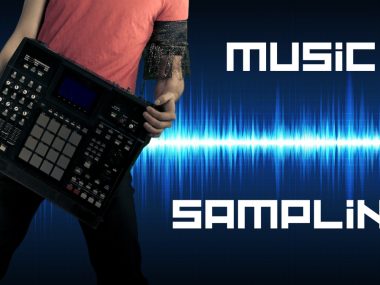Depending on the type of industry you’re in, the term “hook” can mean entirely different things. For example, the hook is a fisherman’s livelihood, an actor’s nightmare, and Peter Pan’s arch-enemy.
The music world also contains a hook, only it’s not as simple to define because it’s not one thing in particular. The hook in any song is different from the other, and it’s often not defined clearly.
However, we know it’s there; in all the songs that transcended the boundaries of time, all the songs that we recognize right when they start, and all the songs that get stuck in our heads after listening to them once or twice.
In today’s article, I’ll be answering the question “what is a hook in music?” and discussing its common types, popular examples, and how it compares to a riff or chorus.
What is a Hook in Music?
In music, the hook is the bit of a song that catches the listener’s ear and “hooks” them in. The hook can be a lyrical line, an instrumental phrase, a melodic passage, or even the title of the song; whatever part makes the song unique and memorable to the audience.
The Hook in Music: Explained
Have you ever tried remembering a certain song and ended up asking someone “what’s that song that goes da nana na?” Chances are you did this at least once before, and well, the sound you sang then was probably the song’s hook.
You see, the hook of any song is the part that stands out the most to the listener’s ear. It’s the bit that reminds them of the song and they expect others to also remember the song by that part.
You know that tune or lyric that you caught yourself singing or humming too many times? Or felt like it’s always on repeat at the back of your mind?
Well, the best hooks tend to have that effect. They get stuck in people’s heads for days at a time!
Examples of a hook you’re probably familiar with are Ariana Grande’s “thank you, next” and Backstreet Boys’ “tell me why” in “I Want It That Way” after the chorus and during the outro.
The meaning of “hook” in music

As the term suggests, the hook of a song is the section that “baits” our attention and gets stuck in our memory. This word is -as you probably guessed- is a fishing metaphor that refers to the similarity between the ability of an actual hook to lure/catch fish and the musical hook’s ability to lure/catch the interest of a listener’s ear.
The purpose of a hook in music
One of the main goals of incorporating a hook in a song is to give it that catchy, easy-to-remember quality and get the audience heavily engaged.
Whether it’s a whole chorus, a short rhythmic phrase, or anything in between, if this bit stands out from the rest of the song and urges people to sing or dance, then it’s a hook. As a result of being so unique and repeated, the hook eventually becomes what a song is best known for.
We shouldn’t forget that, of course, what one listener thinks is catchy and easy to remember doesn’t have to be the same for another listener, which means that a hook can be subjective.
The use of the term “hook” in music
In the music industry, you’ll find the term “hook” commonly used in R&B, pop, dance, and hip-hop music genres. It’s also used in the majority of hit songs played on the radio, which usually features at least one hook.
However, this isn’t a rule. Some songs don’t have a hook while songs possess more than one.
Hook Types in Music

Now that you have a better idea of what a hook is in music, allow me to breakdown the three main types of musical hooks you can come across:
1. Intro Hook
First up, we have the intro hook, which is a melodic idea that occurs at the beginning of a song then drops in and out during the song. The hook type further reinforces the main goal of using a hook; grabbing the attention of listeners.
Not to mention, using an intro hook increases the chance of a song being recognized instantly.
Keep in mind that whatever the audience hears first will appear again multiple times throughout the song, so the intro hook should be so intriguing that it piques the listener’s interest on the spot. Otherwise, they may not be encouraged to receive the primary idea.
A few examples of an intro hook include:
- Vanilla Ice’s “Ice Ice Baby”.
- Deep Purple’s “Smoke On The Water”
- Lady Gaga’s oh oh oh’s in “Bad Romance”.
To produce an intro hook, consider the steps below:
- Improvise a concise melodic idea with a fun, catchy rhythm. I recommend focusing on the pentatonic scale notes.
- Form three distinct chord progressions to go with the hook. You should be able to use these as progressions for the chorus, verse, and bridge.
- Be sure that your intro hook drops in and out throughout the song to prevent boredom.
2. Background Instrumental Hook

While the intro hook is a melodic idea, the background instrumental hook is a brief melodic phrase spread throughout the song but not necessarily an element of the vocal melody. In most cases, this hook consists of a 2- or 4-beat riff accompanying the lyrics.
Background instrumental hooks serve as responses to lyrics in the chorus, placed where a natural gap occurs in a verse or chorus or verse that can fit a short melodic idea. This instrumental will then reappear during the song.
Examples of background instrumental hooks include:
- Disclosure’s “Latch”.
- “Like A Rolling Stone” by Bob Dylan.
To produce a background instrumental hook, consider the steps below:
- After you finish your song, create a 2- to 4-beat riff on the keyboard or guitar with a unique rhythm.
- You should have most of the chords in the song’s key accompany this lick and feature in the chorus.
- Keep in mind that a background instrumental hook pairs quite well when combined with other hook types.
Take the hit song “Call Me Maybe” by Carly Rae Jepson for example. The vocal melody plays in the chorus, whereas the synth has a call-and-response sort of relationship with the lyrics.
When using this type of hook, do your best to wrap it around the lyrics of the chorus, instead of over them to avoid overshadowing the singer. Try to make the background instrumental hook “answer” the lyrics of the chorus.
3. Rhythm Hook

Finally, we have the rhythm hook. This type of hook determines the combination of rhythm and beat building the song, which is often a fast 4- or 8-beat rhythm that piques your interest.
Stevie Wonder’s music heavily relied on rhythm hooks as he started most of his hit songs with one. Yes, rhythm hooks were so effective back in the day and still are nowadays.
A rhythm hook can be lyrical or instrumental as follows:
- Without lyrics — the hook will depend on a blend of elements including a catchy beat, a bassline, and chord progression. For example, the memorable guitar line of Stevie Wonder’s “Superstition”.
- With lyrics — words provide a stronger drive to a rhythm hook. Many artists incorporate a syncopation or swing to their song’s lyrical hook to help it stand out.
To produce a rhythm hook, consider the steps below:
- Keep a beat by clapping your hands, tapping your foot, or slapping your knee.
- Create a fast 4- or 8-beat rhythm to capture attention as the rhythmic hook should be short.
- Also, the chord progression should be short, so improvise a 1- or 2-chord progression that sounds nice on repeat.
- After that, form a bass line with a smooth connection between the end and the beginning of the line. Remember that while the line should possess a catchy rhythm, it doesn’t have to share the rhythm of other instruments.
What’s the Difference between Hook and Chorus?

It’s common for people to mix up the chorus and the hook. While it’s true that the two could be the same thing, this isn’t always the case.
Sometimes the hook of a song is its chorus, but not always. Generally, choruses are usually also hooks, however, hooks can be several things including rhythms, instrumentals, and vocals.
Additionally, a song typically has a single chorus but may feature a few hooks.
What’s the Difference between a Hook and a Riff?
Although a hook and a riff share the similarity of being a short, fun, and catchy melodic idea, they aren’t the same thing. The riff occurs more often throughout the song to give it personality and structure.
On the other hand, the hook could be any part of the song that’s created to catch the attention of listeners. Yes, the hook is catchy as well, but it doesn’t appear as frequently as a riff to ensure it has a greater effect when it does show up.







